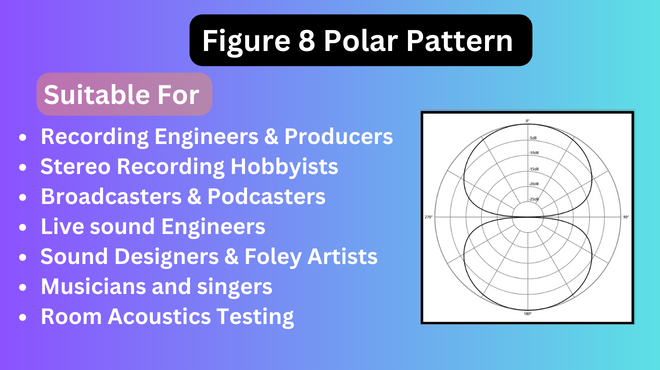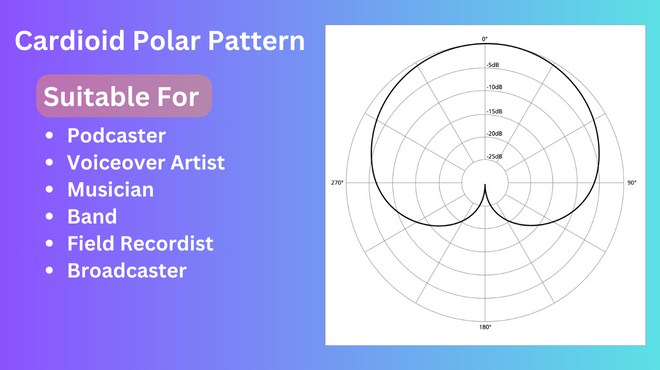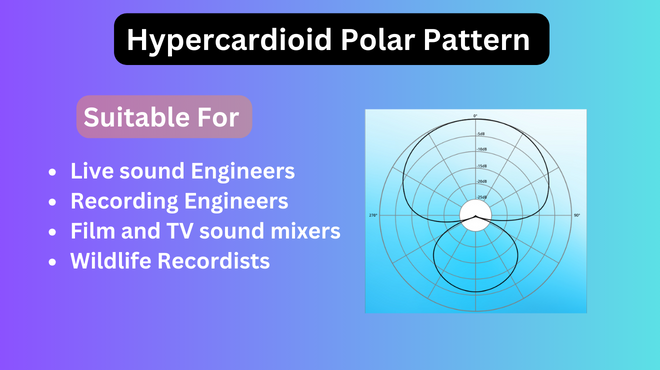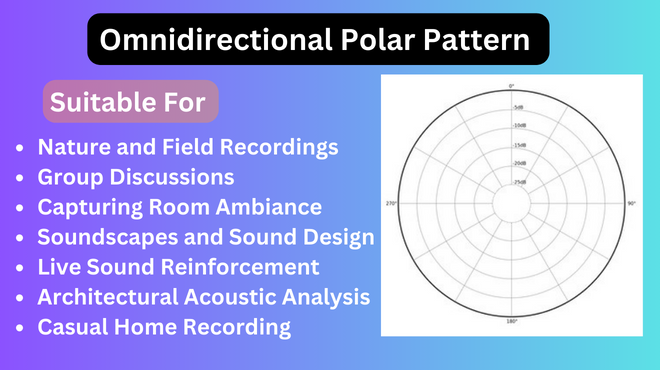The Origin of the Figure 8 Polar Pattern
Figure 8 polar pattern, also known as the bidirectional pattern, can be traced back to the early 20th century. This unique polar pattern is useful for recording and transmitting because it is sensitive to sound from the front and back while successfully rejecting sound from the sides.
BiDirectional Microphone Design
Early improvements in Figure 8 microphones focused on their exceptional capacity to equally catch sound from the front and back of the microphone element. Pioneers of this design, as opposed to omnidirectional microphones that react uniformly to sound pressure from all directions, were ribbon microphones.
Alan Blumlein’s Contribution: The Blumlein Pair Array
The phrase “Blumlein pair” did not exist during Alan Blumlein’s lifetime; rather, it was coined subsequently to honor his groundbreaking work. Due to the lack of Figure 8 microphones, Blumlein initially experimented with omnidirectional microphones. However, he saw the potential of directional microphones—later referred to as the Blumlein pair—and foresaw their use. This nomenclature’s exact beginnings are still obscure in historical terms. The “Blumlein pair,” a ground-breaking invention by renowned engineer and inventor Alan Blumlein, made an enduring impression on Figure 8 microphones. This groundbreaking stereo recording technique used two identical microphones with Figure 8 polar patterns that were placed at a 90-degree angle. The exact positioning of these microphones about the sound source by Blumlein produced remarkably lifelike stereo images, starting a revolution in the field.
What is a Figure 8 Polar Pattern?
In a figure 8 polar pattern, sometimes referred to as a bidirectional polar pattern, the microphone is equally responsive to sound that enters from the front and the back, while rejecting sound that enters from the sides. This pattern is frequently used for simultaneous stereo recording of two people as well as for live sound applycations to lessen feedback.
Why should you use an Figure 8 polar pattern?
You should use a Figure 8 polar pattern in a microphone for several reasons:
Flexible Dual-Capture: Figure 8 patterns exclude sound from the sides of the microphone while simultaneously capturing sounds from the front and back. They are perfect for recording two sound sources at once or for bi-directional audio capture.
Enhanced Isolation: Figure 8 patterns effectively isolate the sound sources in front of and behind the microphone while minimizing side noise interference. When you wish to concentrate on a few audio sources while reducing background or off-axis noise, this is especially helpful.
Stereo Recording: Figure 8 patterns are frequently employed in stereo recording methods like the Blumlein pair. A realistic stereo image with great channel separation can be produced by two microphones with Figure 8 patterns placed at right angles to one another.
Natural Sound: Figure 8 patterns frequently result in a more realistic and precise depiction of the sound source because they record sounds from two directions, replicating how our ears perceive sound in a three-dimensional space.
Reduced Feedback: Figure 8 patterns might help reduce feedback problems in live sound applications. They can aid in preventing feedback in onstage microphone installations by rejecting sound from the sides (where monitors and other sound sources may be situated).
Unique Creative Effects: Figure-eight polar pattern can be imaginatively used in sound design and recording to capture distinctive stereo or multi-source audio effects. In terms of music and audio production, they support experimentation and creative discovery.
Interviews and podcasts: A microphone with a Figure 8 pattern can capture both speakers while cutting down on background noise and crosstalk while recording interviews or podcasts with two participants facing one another.
Which Microphones used Figure 8 Polar Pattern?
Ribbon microphones and some condenser microphones frequently employ the Figure 8 polar pattern. Here are a few microphones with the Figure 8 polar pattern as examples:
Ribbon Microphones: A Figure 8 polar pattern is a common feature of ribbon microphones. The MXL R144, R1 MKII, and X1 Series are a few examples. Ribbon mics are well-liked options for many recording applications because of their natural and slick sound capture.
Multi-Pattern Condenser Microphones: Figure-eight polar pattern is one example of a large-diaphragm condenser microphone with switchable polar patterns. The well-known multi-pattern condenser mics Neumann WA-47Jr, TAK55, LCT-441, and AKG P420, for instance, all have the Figure 8 option. Due to their flexibility, sound professionals can choose the ideal polar pattern to accommodate various recording circumstances.
Who benefits the most from a Figure 8 polar pattern?
The following are some categories and scenarios where this layout is most advantageous:
Recording engineers and producers: When they need to concurrently record two sound sources or produce a stereo recording with accurate channel separation, recording engineers and producers employ Figure 8 microphones. It offers more freedom and control while collecting audio in studio and live recording settings.
Stereo Recording hobbyists: For techniques like the Blumlein pair, audiophiles, and recording hobbyists frequently employ Figure 8 microphones. This method creates a realistic and roomy stereo image, making it perfect for acoustic instruments, classical music, and other immersive audio experiences.
Broadcasters and Podcasters: Figure 8 microphones are useful for broadcasters and podcasters who are holding discussions or interviews with two people facing one another. They produce clear and focused audio by capturing both speakers’ voices while reducing background noise and crosstalk.
Live sound engineers: When they need to minimize feedback and isolate sound sources on stage, live sound engineers employ Figure 8 microphones. Live sound also frequently uses hypercardioid and supercardioid microphones, however, Figure 8 patterns can be useful for reducing off-axis sound pickup.
Sound Designers and Foley Artists: Figure 8 microphones are used by sound designers and foley artists in the film and television industries to record particular sound effects and environments. The rejection of side noise by the pattern makes it easier to isolate the intended sounds, improving post-production work.
Musicians and singers: In the studio, musicians and singers can employ Figure 8 microphones for artistic objectives including capturing one-of-a-kind stereo or multi-source audio effects. Certain vocal and instrument recordings may find the pattern’s natural sound capture intriguing.
Room Acoustics Testing: To precisely measure sound reflections and echoes, acoustic engineers and other experts who evaluate room acoustics frequently use Figure 8 microphones. These microphones aid in the analysis of an acoustic space’s spatial properties.
What are the Figure-eight polar pattern vocals?
What is a figure-eight pickup pattern?
What polar pattern is best for vocal?
In a Figure 8 pattern, the microphone rejects noises from the sides and is equally sensitive to sources of sound coming from two opposite directions, usually the front and the back of the microphone. This implies that it minimizes or cancels out sounds coming from the left and right while simultaneously capturing sounds from the front and back.
Figure 8 microphones are adaptable and used in a variety of audio recording applications, such as interviews, duet performances, stereo recording methods like the Blumlein pair, and
What polar pattern is best for vocal?
Cardioid: When recording vocals, the cardioid polar pattern is frequently used. It mostly picks up sound coming from the microphone’s front while rejecting sound coming from the sides and back. This pattern decreases background noise, effectively isolates the speech source, and lowers the possibility of feedback in live sound applications. It is adaptable and suitable for podcasters and solo vocalists.
Supercardioid or Hypercardioid: Are more directed than cardioid patterns and provide even stronger off-axis rejection. They concentrate on catching sound from the front while reducing off-axis noise, making them perfect for recording in busy venues or on stages. When monitoring levels are high during live performances, they can be helpful.
The ideal polar pattern for recording vocals ultimately depends on the exact recording circumstances, the intended sound quality, and the chosen microphone. To get the ideal vocal sound in diverse contexts, experiment with various patterns and microphone positions.




